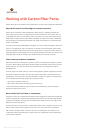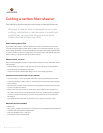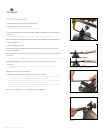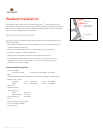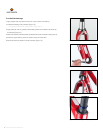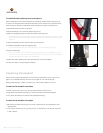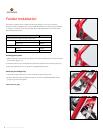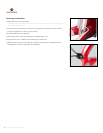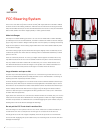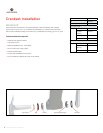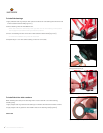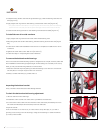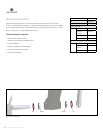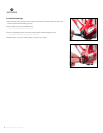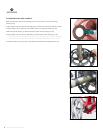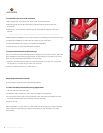
12
|
GARY FISHER SERVICE INFORMATION
FCC Steering System
The Cronus uses the FCC (Fisher Control Column) with a special front hub that is mated
to the front fork. This mating creates a unied structure that is extra strong and extra
stiff, which makes the bicycle corner and handle better. The result is a hub/fork interface
that is 25% stiffer. And with a weight penalty or a few grams at most.
Wider hub anges
One way to increase handling precision is to use a front wheel that is stiffer laterally.
To make the Cronus front wheel stiffer, we have increased the width of the hub anges
(Figure 18). This increase in ange width spreads out the spokes, increasing the bracing
angle of the spokes. A wider bracing angle makes the front wheel stiffer laterally with
no increase in weight.
The wider bracing angle requires that the fork legs be slightly wider so that they do not
contact the spokes. The wider stance of the legs also increase lateral stiffness, so that
part is a win-win.
There is a downside, however. In a race, you might need a spare front wheel. This is not
a problem because the Cronus uses a standard 100mm OLD (Over Locknut Dimension)
hub. Any wheel in the follow vehicle will work ne. But your Cronus wheel will not work
in a different bike because the hub anges or the spokes can contact the blades of a
“standard” fork. The consequences of this type of contact should be obvious.
Large-diameter end caps on hub
Another way to increase steering precision is to reduce fork leg “twist” that occurs as
the fork is loaded laterally and torsionally, like what occurs when the bike is cornering on
anything less than a perfectly smooth surface.
On most wheels, the biggest source of this twist is the movement between the fork tips
and the hub, even with the quick-release correctly tightened. The easiest way to reduce
this motion is to increase the contact area between the hub end faces and the fork tips.
That is exactly what we did with the Cronus (Figure 19). The larger end faces create a
“block” for the fork tips to rest against. We also gave the fork custom, over-sized faces
to mate with this special hub.
Again, there is a downside. You can still use a wheel from the race vehicle, but your Cronus
wheel can not be used with a different fork. The large faces of the FCC might completely
miss the dropout face on a different fork such that engaging the quick release can put a
bending load on the hub axle and damage the bearings.
Do not put the FCC front wheel in another bike
The hub anges or the spokes of the Cronus front wheel can contact the blades of
a “standard” fork. The consequences of this type of contact should be obvious
The large faces of the FCC might completely miss the dropout face on a different
fork such that engaging the quick release can put a bending load on the hub axle and
damage the bearings



